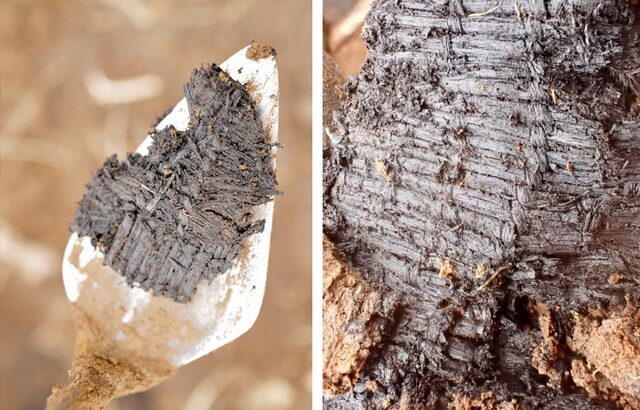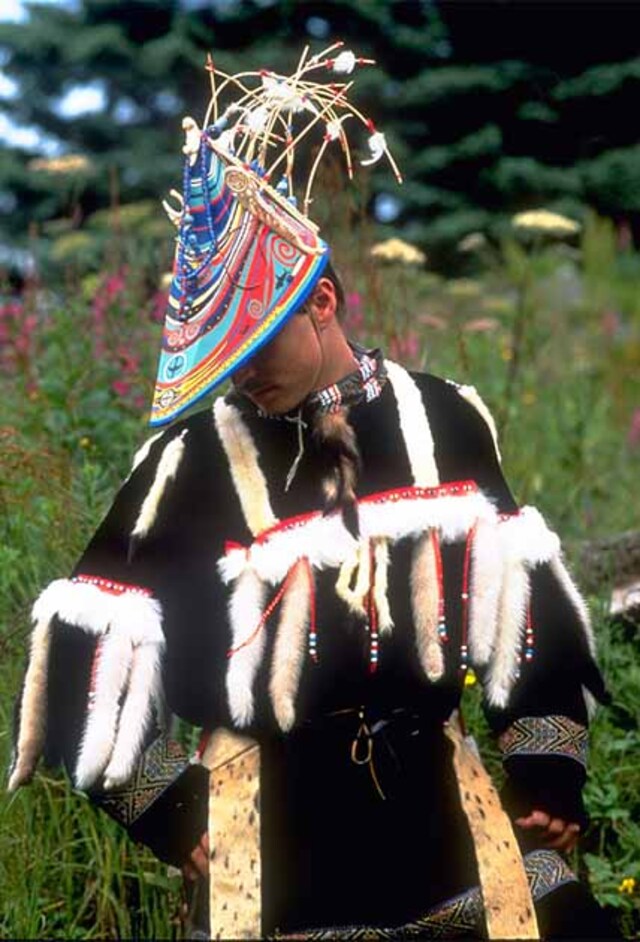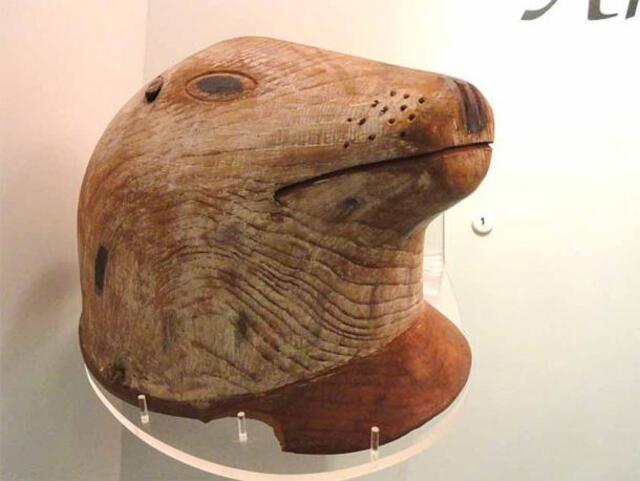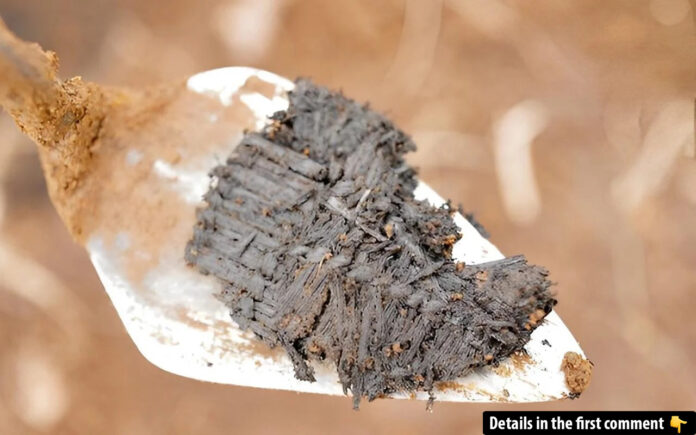In the serene yet rugged landscapes of Kodiak Island, Alaska, a remarkable piece of ancient history has been brought to light. Archaeologists from the Alutiiq Museum and Archaeological Repository have unearthed woven grass fragments estimated to be 3,000 years old, making them the oldest known examples of Alutiiq weaving. This groundbreaking discovery offers a rare glimpse into the craftsmanship and culture of the Alutiiq people, a community deeply connected to the land and sea.
A Discovery Beneath Layers of Time
The excavation site near Karluk Lake, where this incredible find took place, was once home to an ancestral sod house. As explained by Patrick Saltonstall, the Curator of Archaeology at the Alutiiq Museum, the unique preservation of the woven fragments was the result of a fire that caused the house’s wooden-lined walls to collapse inward. The charred remains of the grass mats, which once adorned the floor, were sealed beneath the debris, shielding them from further decay.
The fragments, covering an area of about two meters at the back of the house, are believed to have served as sleeping mats. This discovery is monumental, as it extends the history of Alutiiq weaving by an astonishing 2,400 years, far surpassing the previous oldest examples in the museum’s collection, which date back 600 years.

Weaving Techniques of the Alutiiq People
The woven remnants reveal a sophisticated technique that aligns with historical Alutiiq craftsmanship. The process involved laying long, parallel strands of grass (the warp) and securing them with perpendicular rows of twining (the weft), creating an open weave pattern. Some of the fragments even feature intricate braiding, possibly marking the finished edges of the mats.
This style of weaving demonstrates the resourcefulness and skill of the Alutiiq people, who utilized readily available materials like grass and spruce roots to craft essential items. These artifacts are not just functional; they represent a long-standing tradition that combines practicality with artistic expression.

Experience the vibrant Kodiak Alutiiq dancers in celebration of 2018 – watch the video to witness their captivating performance and cultural heritage!
The Significance of Radiocarbon Dating
Radiocarbon dating confirmed the astonishing age of the sod house and its woven fragments, placing them at approximately 3,000 years old. The architectural style of the structure and nearby artifacts further support this timeline. This discovery not only pushes back the known history of Alutiiq weaving but also sheds light on the daily lives of the Kodiak Alutiiq people, whose ingenuity and craftsmanship have been passed down through generations.
Preservation and Documentation Efforts
Given the fragile nature of the woven fragments, their extraction and transportation required meticulous care. The field crew, working under the guidance of the Alutiiq Museum, carefully removed the pieces and placed them in specially designed containers for safe transport to Kodiak.
At the Alutiiq Museum’s laboratory, these artifacts will undergo preservation and further study, ensuring their long-term protection. The project received vital support from Koniag, the regional Alaska Native Corporation for Kodiak Alutiiq people, which sponsored the excavation and owns the land where the site was discovered.
Shauna Hegna, President of Koniag, emphasized the importance of such collaborations, noting how these discoveries celebrate the innovation and resilience of Alutiiq ancestors.
Weaving Through Time: Alutiiq Craftsmanship and Culture
For thousands of years, the Kodiak Alutiiq, also known as Sugpiaq, have thrived in the challenging environment of Alaska’s southern coast. Their rich maritime culture, deeply tied to the sea, is reflected in their art, tools, and traditions. Weaving has always been a central aspect of Alutiiq life, with artisans creating baskets, mats, and hats from materials like grass and spruce roots. Each item often carried patterns that told stories or signified family lineage.
This discovery underscores the enduring importance of weaving in Alutiiq culture, providing a tangible connection to the past. It also highlights the challenges of preserving organic materials, which are prone to degradation over time. The charred fragments from Karluk Lake are a rare and invaluable exception.
The Broader Impact of the Discovery
Beyond its cultural significance, this discovery offers insights into the lives of Kodiak Alutiiq people 3,000 years ago. The use of grass mats for sleeping reflects a practical adaptation to their environment, while the intricate weaving patterns reveal an artistic sensibility.
This find also emphasizes the importance of collaboration between archaeologists, indigenous organizations, and local communities in uncovering and preserving history. The Alutiiq Museum, as a nonprofit dedicated to conserving and sharing Alutiiq heritage, plays a crucial role in ensuring these stories are passed down to future generations.
Future Directions in Research

The discovery of these ancient weavings opens new avenues for research into Alutiiq culture and history. By analyzing the fragments further, researchers hope to gain a deeper understanding of weaving techniques, material usage, and the broader social and economic context of the time.
Additional excavations at the site may reveal more about the daily lives and traditions of the Kodiak Alutiiq people, shedding light on their interactions with the environment and each other.
Video
Discover how a town in Pakistan preserves the 5,000-year-old Ajrak tradition – watch the video to explore the artistry and history behind this ancient craft!
Conclusion
The unearthing of 3,000-year-old woven grass mats on Kodiak Island is more than an archaeological milestone; it is a celebration of the ingenuity and resilience of the Alutiiq people. This discovery not only enriches our understanding of Alutiiq weaving traditions but also serves as a testament to the enduring connection between past and present.
As these fragile fragments are carefully preserved and studied, they remind us of the importance of honoring and protecting the cultural heritage that shapes our collective history. Through the efforts of the Alutiiq Museum, Koniag, and dedicated archaeologists, the threads of the past are being woven into the fabric of the present, ensuring that the stories of the Kodiak Alutiiq continue to inspire generations to come.
